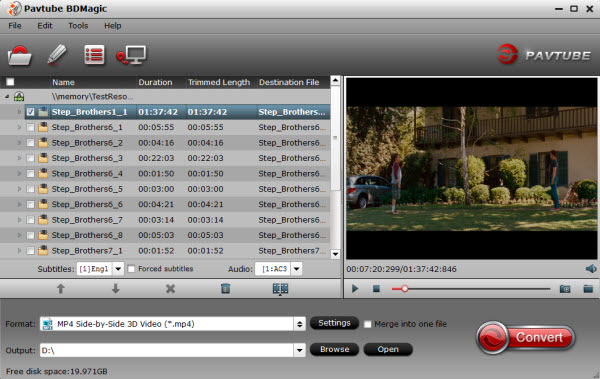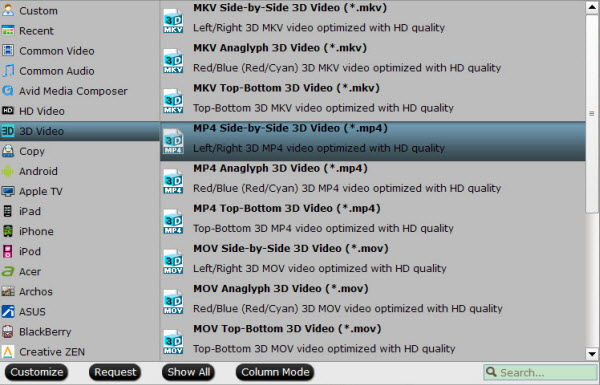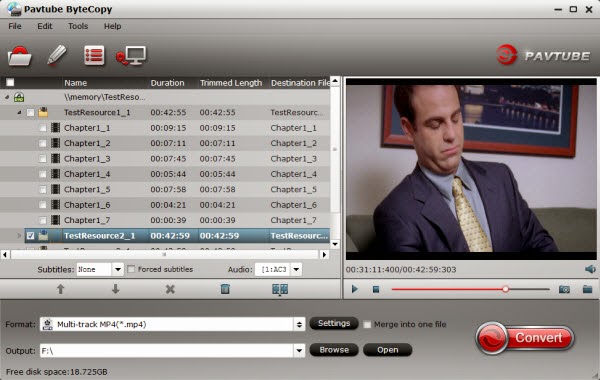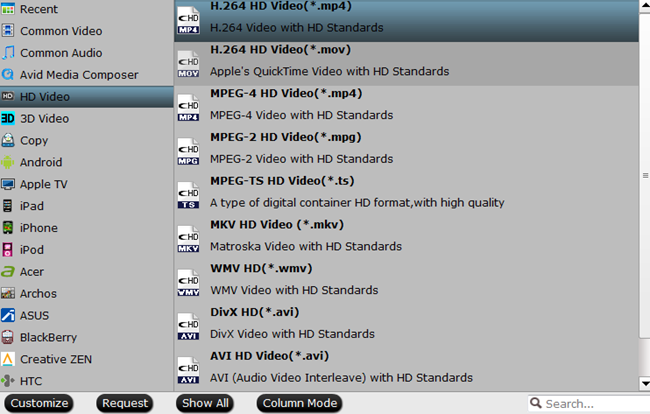Wellcome to Pavtube Facebook Weekend Special Offer!
Get 30% discount for Pavtube Bytecopy for Windows or Mac users:
Get ByteCopy for Windows 30% off: https://usd.swreg.org/cgi-bin/s.cgi?s=48737&p=48737-78&q=1&v=0&d=0&rc=45K2D47VD6&a=fb-weekend-bc30%
Get ByteCopy for Mac 30% off: https://usd.swreg.org/cgi-bin/s.cgi?s=48737&p=48737-81&q=1&v=0&d=0&rc=45K2D477GK&a=fb-weekend-bc30%

What's use to buy it?
- Backup BD/DVD with subtitle and multi audio tracks in lossless MKV
- Watch 3D movies in various 3D effect.
Side by side(left/right), top-bottom and anaglyph(red/blue) effect
- Rip Blu-ray/DVD movies retaining multiple audio and subtitle tracks in .mkv/.mp4/.mov. output format
- Retain chapter marker in lossless .mkv&.mp4
- Rip Blu-ray and DVD movies to a proper format for playing on your Android/Apple/Windows 8 tablets & smartphones, HD Media Players, etc.
- Extract subtitle files in separate .srt
Learn more:
http://www.multipelife.com/bytecopy
http://www.multipelife.com/bytecopy-mac
Sounds great?
Come on and tell you friends as well!
Only 2 days left and to be expired on Oct 12, 2013
If you have any problem to buy or use Pavtube, pls feel free to contact support@pavtube.com (for Windows user), macsupport@pavtube.com (for Mac users).
News source: http://mediaconverting.blogspot.com/2013/10/pavtube-facebook-weekend-special-offer.html
Get 30% discount for Pavtube Bytecopy for Windows or Mac users:
Get ByteCopy for Windows 30% off: https://usd.swreg.org/cgi-bin/s.cgi?s=48737&p=48737-78&q=1&v=0&d=0&rc=45K2D47VD6&a=fb-weekend-bc30%
Get ByteCopy for Mac 30% off: https://usd.swreg.org/cgi-bin/s.cgi?s=48737&p=48737-81&q=1&v=0&d=0&rc=45K2D477GK&a=fb-weekend-bc30%

What's use to buy it?
- Backup BD/DVD with subtitle and multi audio tracks in lossless MKV
- Watch 3D movies in various 3D effect.
Side by side(left/right), top-bottom and anaglyph(red/blue) effect
- Rip Blu-ray/DVD movies retaining multiple audio and subtitle tracks in .mkv/.mp4/.mov. output format
- Retain chapter marker in lossless .mkv&.mp4
- Rip Blu-ray and DVD movies to a proper format for playing on your Android/Apple/Windows 8 tablets & smartphones, HD Media Players, etc.
- Extract subtitle files in separate .srt
Learn more:
http://www.multipelife.com/bytecopy
http://www.multipelife.com/bytecopy-mac
Sounds great?
Come on and tell you friends as well!
Only 2 days left and to be expired on Oct 12, 2013
If you have any problem to buy or use Pavtube, pls feel free to contact support@pavtube.com (for Windows user), macsupport@pavtube.com (for Mac users).
News source: http://mediaconverting.blogspot.com/2013/10/pavtube-facebook-weekend-special-offer.html








